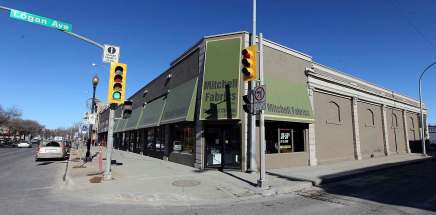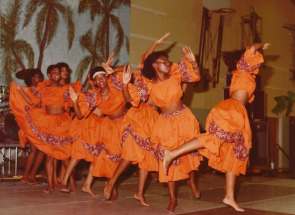Folks festival Winnipeg's celebration of cultural diversity turns 50 this year and for many of the people who've volunteered over the years, it really is a family affair
Read this article for free:
or
Already have an account? Log in here »
To continue reading, please subscribe:
Monthly Digital Subscription
$0 for the first 4 weeks*
- Enjoy unlimited reading on winnipegfreepress.com
- Read the E-Edition, our digital replica newspaper
- Access News Break, our award-winning app
- Play interactive puzzles
*No charge for 4 weeks then price increases to the regular rate of $19.00 plus GST every four weeks. Offer available to new and qualified returning subscribers only. Cancel any time.
Monthly Digital Subscription
$4.75/week*
- Enjoy unlimited reading on winnipegfreepress.com
- Read the E-Edition, our digital replica newspaper
- Access News Break, our award-winning app
- Play interactive puzzles
*Billed as $19 plus GST every four weeks. Cancel any time.
To continue reading, please subscribe:
Add Free Press access to your Brandon Sun subscription for only an additional
$1 for the first 4 weeks*
*Your next subscription payment will increase by $1.00 and you will be charged $16.99 plus GST for four weeks. After four weeks, your payment will increase to $23.99 plus GST every four weeks.
Read unlimited articles for free today:
or
Already have an account? Log in here »
Hey there, time traveller!
This article was published 02/08/2019 (2322 days ago), so information in it may no longer be current.
Walking into a Folklorama pavilion is a lot like walking into a family gathering. The hosts are excited to see you, the smell of home-cooked food is wafting from the kitchen and multiple generations are together under one roof.
Festival Preview
Folklorama
• Begins Sunday and continues in two one-week blocks until Aug. 17
• Pavilions are located across the city
• More information, including ticket packages and prices, is available at folklorama.ca
For many involved in the longest running multicultural festival in the world, the event is an actual family gathering.
Malinda Lee’s parents, Philip and Anita, helped organize the Chinese pavilion during the inaugural Folklorama event in 1970 — and her sisters, cousins, aunts, uncles and grandparents have all been involved in one way or another over the last 50 years. Not only that, but she has gained some new relatives along the way.
“My sisters and I had a very rich childhood,” Lee, 40, says. “We met so many incredible people, not only within the Chinese community, but within the multicultural community, so we have honorary aunts and uncles of all backgrounds.”

Twenty-one groups were represented at the first Folklorama festival, which was meant to be a one-off celebration for Manitoba’s centennial, but was so well-received that it became an annual event.
Back in 1970, the Chinese pavilion operated out of a modest tent located downtown on Portage Avenue. While the scope was a lot smaller, the site had all the elements of a modern pavilion: food, entertainment and cultural goods.
Lee’s older sisters were infants at the time and her grandmother took care of them while her parents volunteered. This became the trend for most volunteers; relatives and friends would help with child-care duties until the kids were old enough to participate.
Lee’s earliest memories of Folklorama include a healthy dose of stage fright and time spent helping out in the kitchen.
“I think I was two or three and I would have to be in fashion shows and I would be wearing cultural attire for little children,” she says. “And before every pavilion my job was to sort the cutlery.”
Self-described as a painfully shy child, Lee credits her experiences in the spotlight at Folklorama with helping her break out of her shell. Today, she is a pavilion co-ordinator and still volunteers alongside her parents during the festival.
A taste of the next 50 years
There’s a new pavilion on the itinerary at Folklorama this year.
It’s been a long time coming, and a lot of behind-the-scenes preparation, but those in Winnipeg’s Egyptian community are looking forward to showing off their country of origin.
Hala Salama is part of the pavilion’s organizing committee and spoke with the Free Press a week before opening night.
There’s a new pavilion on the itinerary at Folklorama this year.
It’s been a long time coming, and a lot of behind-the-scenes preparation, but those in Winnipeg’s Egyptian community are looking forward to showing off their country of origin.
Hala Salama is part of the pavilion’s organizing committee and spoke with the Free Press a week before opening night.
“It is a lot of work, but it’s so rewarding to meet all these people and find all the enthusiasm,” Salama says, adding that the advice she’s received from those running established pavilions has been invaluable.
“Everybody feels so passionate about it and they feel the success of a new pavilion is the success of everybody.”
In order to participate with a pavilion, organizers need to get a licence to operate from Folklorama and undergo a year-long mentorship program filled with meetings and health-and-safety training sessions. Not to mention finding time for performance rehearsals, putting together an authentic menu and highlighting the history of an entire country in a cultural display.
“It’s truly a part-time job for our volunteers,” Folklorama executive director Teresa Cotroneo says.
Visitors to the Egyptian pavilion can expect to learn about different eras of the country — from the pharaohs to the present day — and get a taste of the varied folk dances and traditions present in its 24 provinces. On the menu is koshary, a vegan dish of rice, pasta, lentils, tomatoes, onions and garlic that has become a ubiquitous street food in Egypt.
“It is very famous in Egypt, you’ll find it in every corner,” Salama says. “Our volunteers are so passionate about making it.”
There will also be a gallery of contemporary photographs taken by a local photographer and traveller; and anthropologists from the University of Winnipeg have created a presentation about the Egyptian artifacts at the institution.
According to Cotroneo, the new pavilion is a sign of Folklorama’s future.
“As the demographics of our province change, so will the communities who participate,” she says. “Having an Egyptian pavilion this year illustrates how that is starting to happen, it’s only the second pavilion we have from the Middle East, Israel obviously being the other.”
The Egyptian pavilion runs during the first week of the festival, Aug. 4-10 at the University of Manitoba.
— Eva Wasney
Many groups have come and gone over the last five decades and the Chinese pavilion has had its fair share of ups and downs.
“It’s a big challenge for a pavilion to survive over 50 years,” says Philip, who has been a mainstay of the organizing committee since the first festival, save for the six years he served as Manitoba’s lieutenant-governor and wasn’t t echnically allowed to volunteer.
In the early days, the Chinese pavilion ran on a shoestring budget and Philip recalls donating pieces of carpet from a home-renovation project to make a stage for the dancers when they relocated to an intersection in the middle of Chinatown. Rain regularly put a damper on the outdoor venue until the pavilion moved into the Manitoba Theatre Centre in 1976.
In its heyday, the event drew thousands of visitors nightly, but the crowds thinned as Folklorama grew and the organization took several years off before downsizing to the Dynasty Building in Chinatown — where the pavilion remains today.
For Philip, all of the challenges have been worth it when he considers the positive impact the festival has had on the city.
“It certainly has raised the profile of the Chinese-Canadian community in Winnipeg,” he says. “We’ve enhanced the intercultural exchanges quite a bit and I hope the younger generations keep that up.”
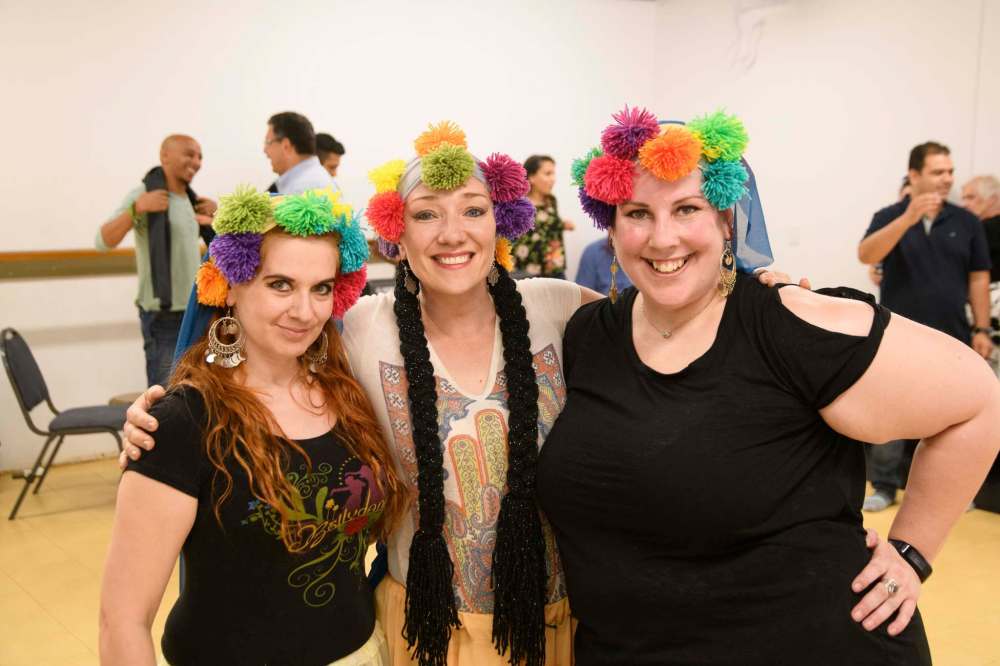
MacKinley Hall is trying to do just that over at the United Kingdom pavilion.
The 17-year-old is entering his third year as a Folklorama youth ambassador, a role he was eager to take on after watching his brother don the sash before him.
“I always saw the ambassadors as such an honoured role,” he says. “I wanted to make the next generation feel how I felt as a kid, seeing these ambassadors in their cultural attire being so proud about their culture.”
MacKinley can’t remember a summer without Folklorama.
He and his brother started out in Irish dancing when they were youngsters, before joining their parents on the volunteer team. Earlier this year, his dad Stan was elected president of the festival’s board of directors — further deepening the Hall family’s Folklorama connection.
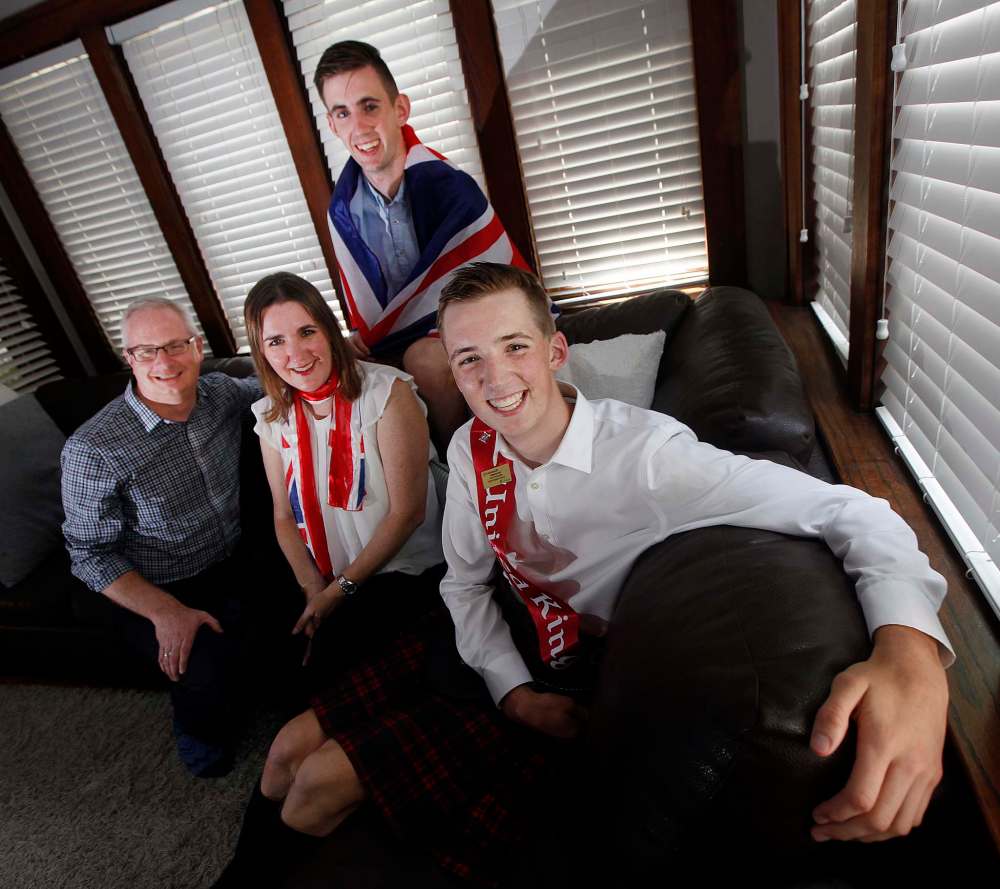
“If you had asked me when my youngest was five and dancing in a hot hockey arena (if) 16 years later we’d be so involved and I would be president, that wouldn’t have been my plan,” Stan says. “You get infected by the people and the smiles and the pride and the fun that happens here.”
Stan’s interest in his own heritage started with his grandmother, who would gleefully read aloud the letters she received from family back home in Belfast. When he had his own kids he made a conscious effort to teach them about their roots — an effort that culminated in a family trip to Ireland and Scotland several years ago to reconnect with relatives there.
The experience left a lasting impression on MacKinley.
“We were essentially total strangers to them and they welcomed us in with open arms, there was always a kettle of tea on and food out,” he says. “That’s how I want to be able to make everyone feel… (as) an ambassador.”
MacKinley could be the poster child for Folklorama’s mission of celebrating diversity and promoting cultural understanding. He is open-minded and has a deep appreciation for his own and other people’s culture. He has met some of his best friends as a youth ambassador and sums up his thoughts on the festival with his family’s unofficial motto: “The best way to learn and appreciate other people… is to learn where you come from first.”
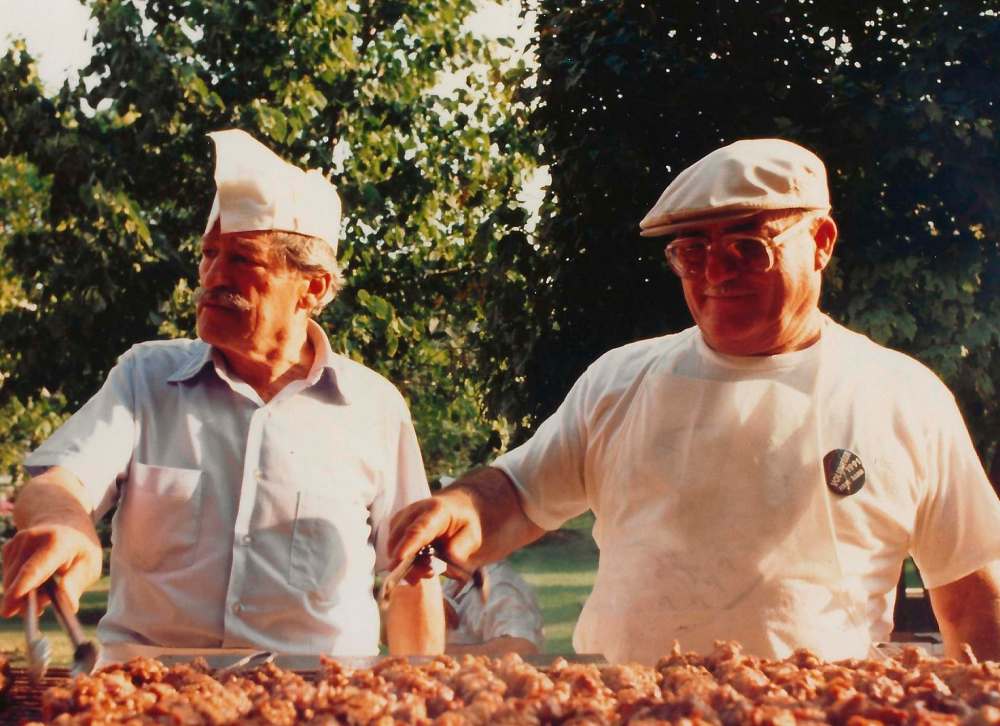
For those involved, Folklorama is much more than a summer festival. It’s quite literally part of their identity.
Teresa Cotroneo, Folklorama’s executive director, has experienced this first-hand.
“It just became a part of the fabric of my life,” says Cotroneo, who started out folk dancing at the former Sicilian pavilion 30 years ago and became head of the organization in 2018.
“As a first-generation Canadian there’s still a significant pull towards traditions of Italy and the customs and morals. It was being able to be part of a group of individuals who are also experiencing those same things.”
While she no longer experiences the day-to-day grind of pavilion life during the festival, the overall feeling of Folklorama hasn’t changed much for her.
“Of course, I see it from a different perspective, but you see the communities coming together and different generations coming together over the years — it has become a family tradition to be part of it.”
There are 45 pavilions participating in Folklorama’s golden anniversary, which runs Aug. 4 to 17, and aside from the growth of the festival, the only thing that has changed in the last 50 years is the calibre of the entertainment, food and cultural displays.
“As the communities themselves have grown they have continued to keep on top of important trends from their country of origin, but without losing the folkloric history,” Cotroneo says.
As for what the future holds, the organization is focusing on growing its year-round educational programming and festival-goers can expect to see new pavilions crop up as time goes on.
Cotroneo also believes Folklorama presents an important example of togetherness in an era where divisiveness has become the norm.
“We’ve always realized the importance of this kind of event,” she says. “But I think that it has really become something to be more and more proud of.”
eva.wasney@freepress.mb.ca
Twitter: @evawasney
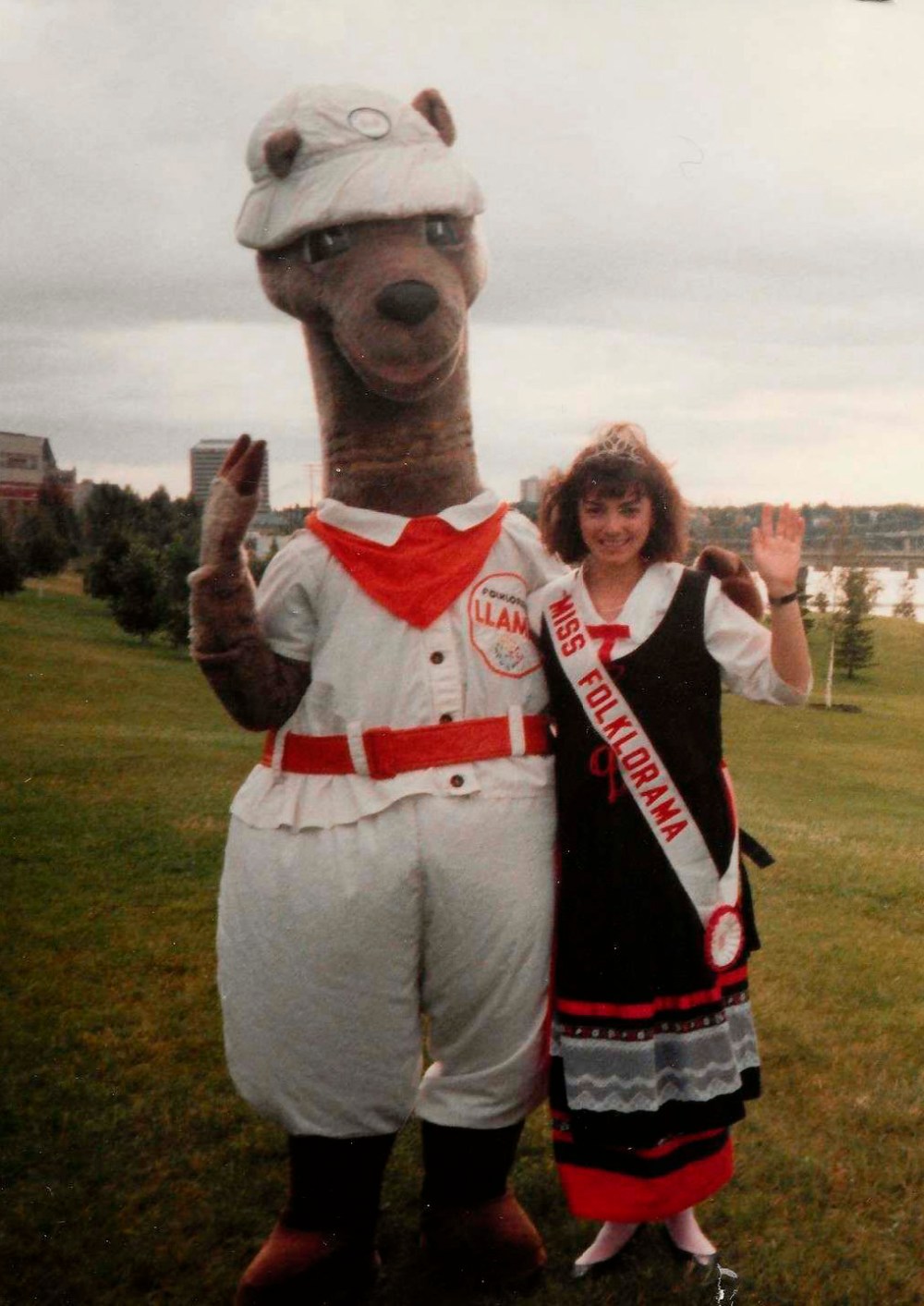
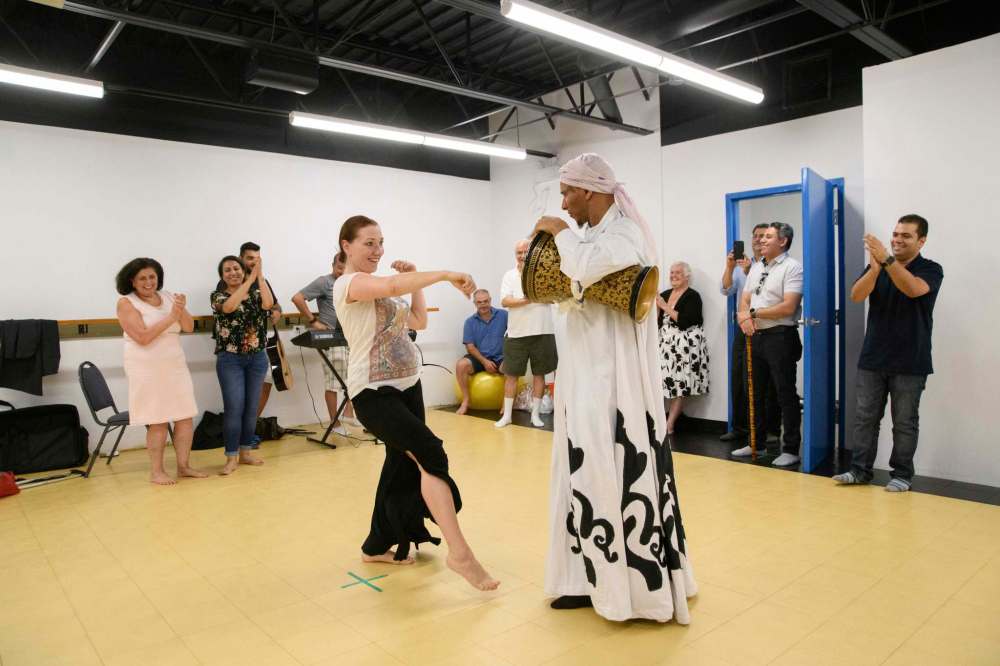

Our newsroom depends on a growing audience of readers to power our journalism. If you are not a paid reader, please consider becoming a subscriber.
Our newsroom depends on its audience of readers to power our journalism. Thank you for your support.







